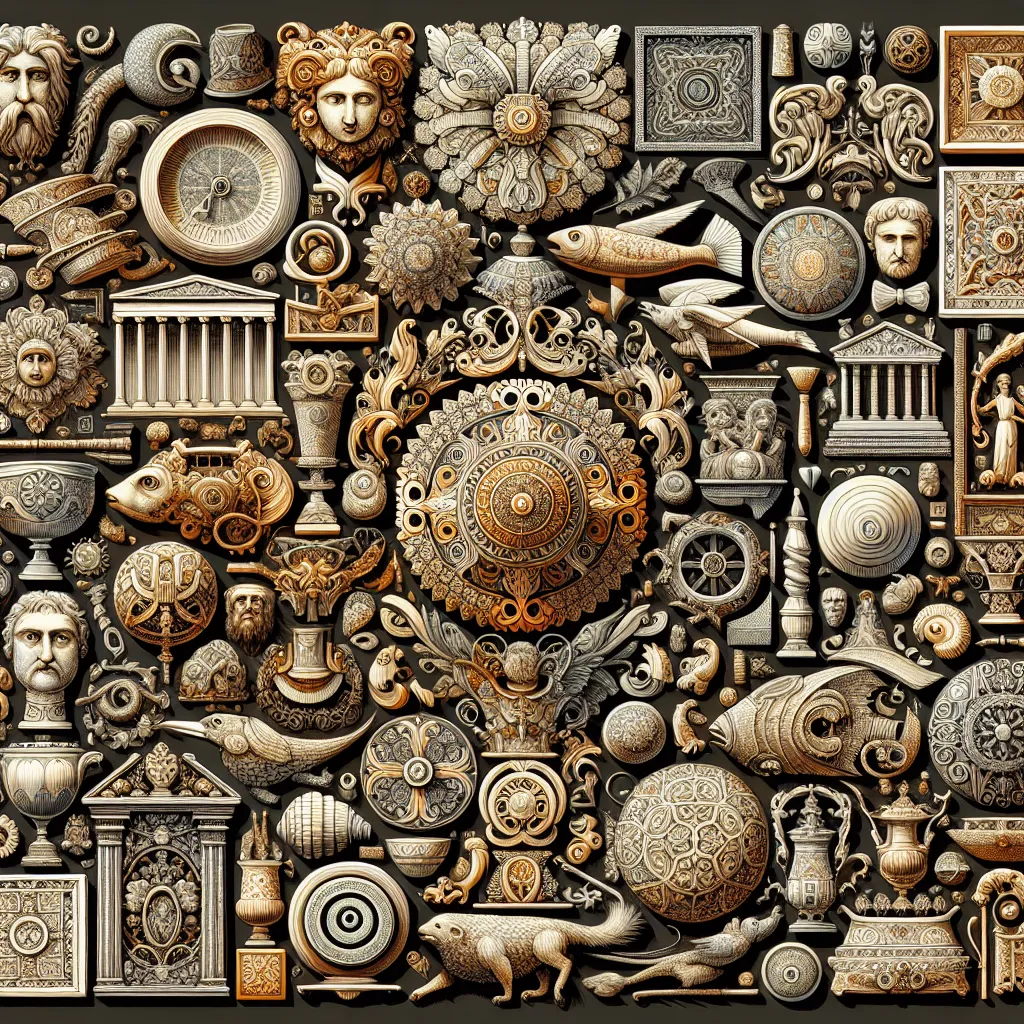Ancient Origins of Ornamental Design
Ornamental design has a rich and diverse history that dates back to ancient civilizations, where its origins can be traced. The ancient origins of ornamental design can be found in the intricate and symbolic patterns used by early cultures such as the Ancient Egyptians, Greeks, Romans, and Mesopotamians. These ancient societies adorned their architecture, jewelry, pottery, and textiles with ornamental designs that often carried deep cultural and religious significance.
Ancient Egyptian ornamental design, for example, was characterized by motifs such as the lotus flower, the scarab beetle, and hieroglyphs, which were often used to adorn tombs, temples, and everyday items. In ancient Greece, ornamental design was influenced by a love of symmetry and geometric patterns, which were used to decorate pottery, architecture, and jewelry. Meanwhile, the Romans favored ornamental motifs depicting mythology, nature, and daily life, which were prominently featured in their mosaics, frescoes, and decorative arts.
Similarly, the ornamental designs of ancient Mesopotamia, including the Sumerians and Assyrians, were distinguished by intricate patterns and motifs that adorned their temples, palaces, and clothing. These early ornamental designs not only served decorative purposes but also conveyed narratives of their respective cultures, beliefs, and values.
As we look back at the ancient origins of ornamental design, it becomes evident that these early civilizations laid the foundation for the evolution of decorative art and design. Their use of symbolism, patterns, and motifs continues to inspire modern trends in ornamental design, showcasing the enduring influence of ancient creativity on contemporary aesthetics.
Evolution of Ornamental Design Through the Ages
Ornamental design has played a significant role in the visual aesthetics of various cultures throughout history. From ancient times to the modern era, the evolution of ornamental design reflects the shifting artistic, cultural, and technological landscapes of different civilizations. In ancient times, ornamental design was characterized by intricate patterns and motifs inspired by nature, mythology, and religious symbolism. The ancient civilizations of Mesopotamia, Egypt, Greece, and Rome showcased elaborate decorative elements in their architecture, pottery, and textiles.
During the medieval period, ornamental design evolved to incorporate influences from the Byzantine, Islamic, and Gothic traditions, resulting in the use of geometric patterns, arabesques, and ornate motifs in illuminated manuscripts, metalwork, and architectural ornamentation. The Renaissance witnessed a revival of classical motifs and a focus on perspective and symmetry, leading to the integration of ornamental design in the realms of painting, sculpture, and interior decoration.
The Baroque and Rococo periods celebrated ornamental design through opulent embellishments, curvilinear forms, and grandiose ornamentation in architecture, furniture, and decorative arts. This era emphasized the use of ornamental elements to convey power, wealth, and theatricality. The Industrial Revolution brought about a shift in ornamental design, as mass production and new materials influenced the aesthetics of the Victorian and Arts and Crafts movements. These movements championed intricate craftsmanship, nature-inspired forms, and a reaction against industrialization and mass-produced ornamentation.
With the advent of the 20th century, ornamental design saw a divergence into various stylistic movements, including Art Nouveau, Art Deco, and Modernism, each showcasing distinct approaches to ornamental expression. The Art Nouveau movement embraced sinuous lines and organic forms, while Art Deco emphasized streamlined, geometric designs with lavish ornamentation. The Modernist movement, on the other hand, favored simplicity, functionality, and a reduction of ornamentation, reflecting the changing attitudes towards design in the context of industrialization and social transformation.
Today, ornamental design continues to evolve, drawing inspiration from diverse cultural influences, technological advancements, and sustainability concerns. Contemporary designers explore new forms of ornamentation, integrating digital technologies, sustainable materials, and cultural motifs to create innovative and contextually relevant ornamental designs for the 21st century.
Cultural Influences on Ornamental Design
Throughout history, ornamental design has been heavily influenced by the cultures and traditions of different societies. Ancient civilizations such as the Egyptian, Greek, and Roman empires were known for their intricate and symbolic ornamentation, often depicting mythological figures, geometric patterns, and natural motifs. These designs not only served decorative purposes but also conveyed deep cultural and religious significance. In the Middle Ages, ornamental design in Europe was heavily influenced by the Gothic architecture and the ornate illuminated manuscripts produced by monks, reflecting the religious and spiritual beliefs of the time.
As global trade and exploration expanded, ornamental design began to incorporate elements from diverse cultures. The intricate patterns of Islamic art, the delicate motifs of Chinese porcelain, and the vibrant colors of Indian textiles all made their way into ornamental design, creating a rich tapestry of influences. The Arts and Crafts movement in the late 19th century sought to revive traditional craftsmanship and celebrate cultural heritage, leading to the incorporation of folk art and indigenous motifs into ornamental design.
In the modern era, globalization and the digital age have further expanded the influences on ornamental design. Contemporary designers often draw inspiration from a variety of cultures, blending traditional elements with innovative techniques to create new and dynamic ornamental styles. Cultural influences continue to play a significant role in shaping ornamental design, reflecting the interconnectedness of the global community and the appreciation for diverse traditions and aesthetics.
Contemporary Trends in Ornamental Design
Contemporary trends in ornamental design have evolved to encompass a wide range of styles and influences, reflecting the dynamic nature of modern design. In recent years, there has been a notable resurgence of interest in minimalism, with clean lines, simple shapes, and subtle detailing taking center stage in ornamental design. This shift towards minimalism is seen as a response to the fast-paced, digital world we live in, as designers and consumers alike seek a sense of calm and simplicity in their surroundings.
Another prominent trend in contemporary ornamental design is the incorporation of geometric patterns and motifs. Inspired by the sleek lines and abstract shapes found in architecture and modern art, geometric ornamentation adds a sense of depth and visual interest to a wide range of products and spaces. Whether used in textiles, furniture, or interior design, these bold geometric designs bring a fresh and contemporary aesthetic to ornamental design.
Furthermore, there has been a growing interest in sustainability and eco-conscious design within the realm of ornamentation. Designers are increasingly incorporating natural materials, such as wood, stone, and plant-based fibers, into their ornamental creations, as well as utilizing techniques that minimize waste and environmental impact. This eco-friendly approach not only aligns with contemporary values but also adds a unique, organic touch to ornamental design.
Moreover, the digital revolution has had a profound impact on contemporary ornamental design, giving rise to digital ornamentation and patterns that push the boundaries of traditional design techniques. With the aid of technology, designers are able to create intricate and intricate digital patterns, opening up new possibilities for ornamental expression in fields such as graphic design, fashion, and product design.
In conclusion, contemporary ornamental design is a vibrant and diverse field that continues to evolve in response to the changing tastes and values of modern society. The trends outlined here represent just a few of the many exciting developments taking place in ornamental design today, showcasing the endless creativity and innovation within this timeless art form.

